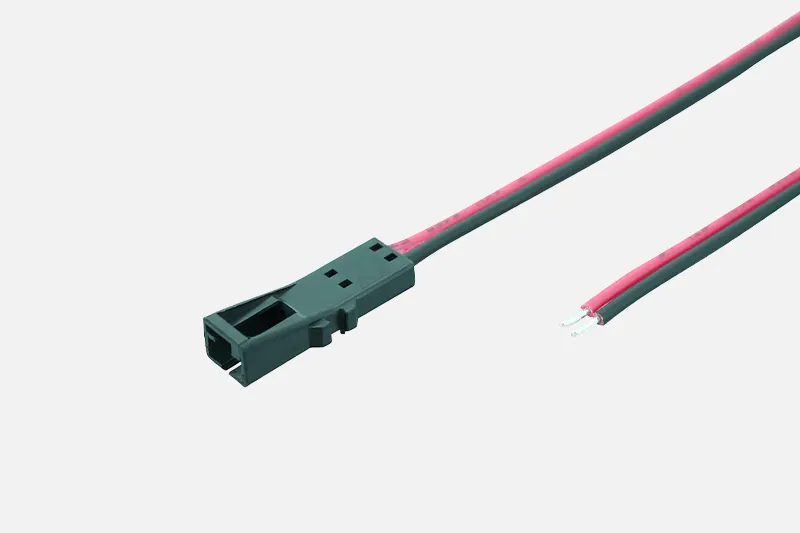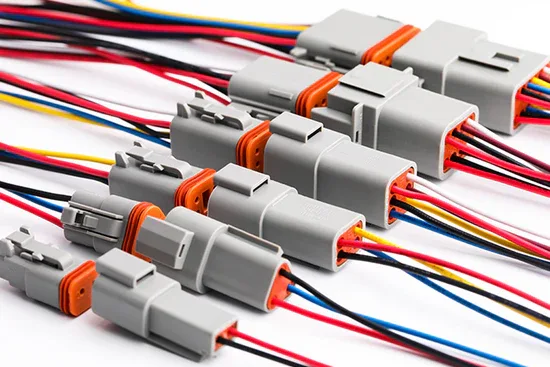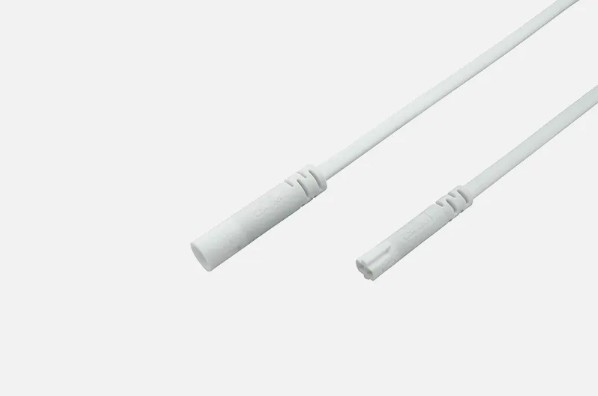In the world of LED lighting, the Adapter Power Lead for LED plays a crucial role in ensuring safe and efficient operation. As a responsible LED user or an Adapter Power Lead for an LED manufacturer, it’s imperative to understand the significance of adhering to safety standards and testing protocols. This article will provide essential insights to make informed choices and decisions.
The Significance of Safety Standards
Safety standards are the backbone of any manufacturing process, and Adapter Power Leads for LED
are no exception. These standards safeguard users and manufacturers from potential risks and hazards arising from electrical components. Non-compliance can lead to severe consequences.
To ensure the safety of Adapter Power Leads for LED, it is vital to comply with internationally recognized standards such as IEC 60950 and UL 60950. These standards lay out specific requirements that manufacturers must meet to guarantee the safety of their products.

I.Key Safety Standards and Regulations
IEC 60950
IEC 60950, or the International Electrotechnical Commission standard for information technology equipment safety, sets guidelines for designing and manufacturing electrical equipment, including Adapter Power Leads for LED. Compliance with IEC 60950 ensures the product is safe for users and meets global safety standards.
UL 60950
UL 60950, a safety standard by Underwriters Laboratories, is widely recognized in North America. Manufacturers exporting Adapter Power Leads for LEDs to the U.S. and Canada must adhere to this standard. UL certification is a mark of quality and safety assurance.
Testing Protocols for Adapter Power Leads
The safety of Adapter Power Leads for LED is more than just following standards during production. Rigorous testing protocols are essential to ensure the quality and reliability of these products. Here are some key testing areas:
Electrical Safety Testing
Electrical safety testing involves evaluating the product’s resistance to electrical faults, insulation integrity, and protection against electrical shock. This ensures that the Adapter Power Lead for LED can handle the expected voltage and current without harming users.
Mechanical Testing
Mechanical testing assesses the physical durability of Adapter Power Leads. This includes tests for flexing, bending, and pull strength to guarantee that the lead can withstand everyday usage without breaking or fraying.
Environmental Testing
Environmental tests simulate real-world conditions, including temperature extremes, humidity, and chemical exposure. Adapter Power Leads for LED must perform reliably under various environmental conditions to meet user expectations.
EMC (Electromagnetic Compatibility) Testing
EMC testing ensures that Adapter Power Leads for LED do not interfere with other electronic devices and are not susceptible to interference themselves. This is crucial in preventing unwanted electromagnetic disturbances.
Independent third-party testing laboratories should conduct these tests to ensure objectivity and compliance with standards.
In the next section, we will delve into quality control measures that manufacturers should implement to maintain safety standards consistently.
II.Ensuring the safety of Adapter Power Leads for LED
continues beyond meeting standards and conducting tests. Quality control measures are essential throughout manufacturing to maintain consistency and reliability.
Quality Control Processes During Manufacturing
- Component Quality: Ensure all components used in Adapter Power Leads for LED meet the required specifications. This includes the wires, connectors, and insulation materials. Subpar parts can compromise the overall safety and performance of the product.
- Production Line Inspections: Implement a rigorous inspection process at every production stage. This includes checks for correct wiring, proper assembly, and adherence to design specifications. Any deviations should be identified and rectified promptly.
- Random Sampling: Randomly sample Adapter Power Leads for LED from the production line for in-depth testing. This helps catch any issues during mass production and ensures that each product meets the necessary safety and quality criteria.
Traceability and Documentation
Maintaining comprehensive records is crucial for traceability and accountability. Manufacturers should:
- Document the specifications of each Adapter Power Lead for LED produced.
- Keep records of component sources and batch numbers.
- Record test results, including those from third-party testing laboratories.
- Implement a recall system in case of safety concerns, allowing for quick identification and removal of faulty products from the market.
Consistency and Reliability
Consistency in manufacturing processes is essential for producing safe Adapter Power Leads for LED. Manufacturers should:
- Train their staff to follow standardized procedures.
- Regularly update and improve manufacturing processes based on feedback and new technologies.
- Perform periodic audits and reviews of quality control procedures to identify areas for improvement.
By implementing these quality control measures, manufacturers can ensure that every Adapter Power Lead for LED leaving their facility meets the required safety and performance standards.
III.Common Pitfalls to Avoid in Adapter Power Lead for LED Manufacturing
While safety standards and testing protocols are critical, it’s equally important to be aware of common pitfalls manufacturers of Adapter Power Leads for LED should avoid. Recognizing and addressing these issues can help maintain high safety standards.
Identification of Common Mistakes and Errors
- Inadequate Component Selection:
- Using substandard or incompatible components can lead to product failures or safety hazards. Manufacturers must ensure that all members meet the required specifications.
- Poor Wiring and Assembly:
- Improper wiring or assembly can result in electrical faults, leading to short circuits or fires. Strict adherence to assembly guidelines is crucial.
- Lack of Testing:
- Skipping or inadequately performing safety tests can lead to undetected issues in Adapter Power Leads. Comprehensive testing is essential to catch any faults before products reach the market.
- Inadequate Quality Control:
- Neglecting quality control measures can result in inconsistent product quality and potential safety risks. Manufacturers should prioritize quality control at every stage of production.
Preventing Common Pitfalls
- Comprehensive Training:
- Ensure your production staff is well-trained in manufacturing processes, quality control, and safety procedures.
- Regular Audits and Inspections:
- Conduct routine audits and inspections of your manufacturing facility to identify any deviations from safety and quality standards.
- Continuous Improvement:
- Continuously seek ways to improve manufacturing processes and incorporate feedback from testing and quality control efforts.
- Stay Informed:
- Keep abreast of industry updates, changes in safety standards, and emerging technologies that can enhance the safety and performance of Adapter Power Leads for LED.
Real-World Examples
To highlight the importance of avoiding common pitfalls, consider the following real-world examples:
- A manufacturer used substandard insulation materials, resulting in product recall and user safety concerns.
- Poor quality control led to consistent product quality, damaging the manufacturer’s reputation and customer trust.
- Skipping EMC testing resulted in Adapter Power Leads interfering with nearby electronic devices, causing operational disruptions.
U
Understanding and addressing common pitfalls is crucial for maintaining safety standards in Adapter Power leads for LED manufacturing. By avoiding these mistakes, manufacturers can produce high-quality and safe products that benefit both their businesses and end-users.
IV.Benefits of Compliant Adapter Power Leads for LED
Ensuring that Adapter Power Leads for LED comply with safety standards and testing protocols benefits manufacturers and end-users. Let’s explore the advantages of using compliant Adapter Power Leads.
1. Safety Assurance
Compliant Adapter Power Leads for LED are designed and manufactured to meet stringent safety standards. This assurance means reduced risks of electrical accidents, such as short circuits, electrical fires, or electric shocks. Users can have peace of mind knowing that their product is safe.
2. Product Longevity
Adapter Power Leads that adhere to safety standards will likely have a longer lifespan. High-quality materials and rigorous testing ensure that the product can withstand the wear and tear of daily use. This longevity translates into cost savings for users, as they won’t need to replace faulty or damaged leads as frequently.
3. Reduced Risks of Electrical Accidents
Compliance with safety standards and testing protocols significantly reduces the likelihood of electrical accidents. Non-compliant or poorly manufactured Adapter Power Leads pose serious user risks and can result in property damage. By using compliant products, the chances of such accidents are greatly diminished.
4. Enhanced Reputation
Producing compliant Adapter Power Leads for LED contributes to a positive reputation in the market for manufacturers. Customers are more likely to trust and choose products from manufacturers with a track record of safety and quality. A good reputation can lead to increased sales and market share.
5. Legal Compliance
Adhering to safety standards is often a legal requirement. Non-compliance can result in legal consequences, including fines and product recalls. Manufacturers prioritizing safety and compliance with regulations are better positioned to avoid legal issues.
6. Customer Satisfaction
Users appreciate products that prioritize safety and quality. Compliant Adapter Power Leads for LED are more likely to meet customers’ performance expectations, leading to higher satisfaction levels. Satisfied customers are more likely to become repeat buyers and recommend products to others.
The benefits of using compliant Adapter Power Leads for LED extend to manufacturers and users. Safety assurance, product longevity, reduced risks, and enhanced reputation are all outcomes of adhering to safety standards and testing protocols. By choosing and manufacturing compliant products, the LED industry can create a safer and more reliable ecosystem for all stakeholders.
V.Conclusion and Additional Resources
In understanding Adapter Power Leads for LED, we’ve explored the critical importance of safety standards and testing protocols for manufacturers and end-users. To recap:
- Safety Standards are the foundation of Adapter Power Lead manufacturing. Compliance with recognized international standards like IEC 60950 and UL 60950 ensures the safety of these products.
- Testing Protocols play a vital role in quality assurance. Rigorous electrical safety, mechanical, environmental, and EMC testing is essential to guarantee the reliability of Adapter Power Leads.
- Quality Control Measures during manufacturing ensure consistency and reliability. Component selection, production line inspections, and documentation are vital aspects.
- Common Pitfalls must be avoided to maintain safety standards, including component quality issues, poor wiring, insufficient testing, and inadequate quality control.
- Compliant Adapter Power Leads Offer Benefits such as safety assurance, product longevity, reduced risks of electrical accidents, enhanced reputation, legal compliance, and higher customer satisfaction.
In conclusion, whether you are a manufacturer or an LED user, prioritizing safety and compliance with safety standards and testing protocols is paramount. Doing so contributes to a safer and more reliable LED ecosystem.



